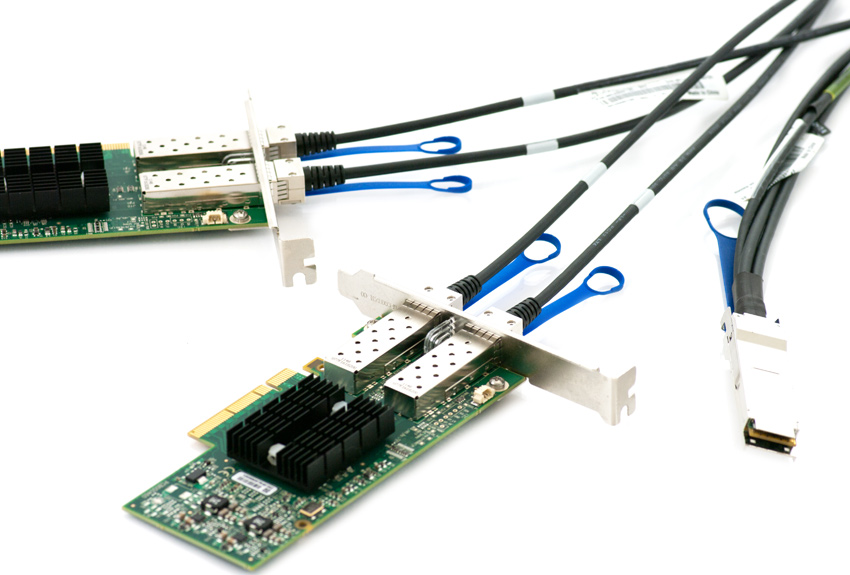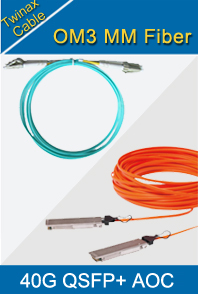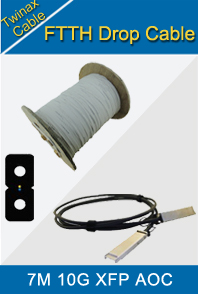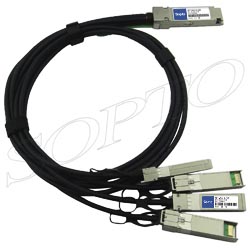-

- Sopto Home
-

- Special Topic
-

- Twinax Cable Knowledge
-

- The Future of Copper Cabling
Twinax Cable Knowledge
- Cable Labeling as Part of Data Center Management
- How to Correctly Run cables On Servers in a Data Center?
- 4 Realities You Should Consider 10G Ethernet for Your Business
- Is it finally the end of copper?
- Why We Need Both 40G and 100G Ethernet Cable?
- What is Twisted Pair Cable?
- Benefits of Twisted Pair Cable Construction
- Why Copper Is Used in Cables?
- A Brief Look at Ethernet Cable Construction
SOPTO Special Topic
Certificate



Guarantee
Except products belongs to Bargain Shop section, all products are warranted by SOPTO only to purchasers for resale or for use in business or original equipment manufacturer, against defects in workmanship or materials under normal use (consumables, normal tear and wear excluded) for one year after date of purchase from SOPTO, unless otherwise stated...
Return Policies
Defective products will be accepted for exchange, at our discretion, within 14 days from receipt. Buyer might be requested to return the defective products to SOPTO for verification or authorized service location, as SOPTO designated, shipping costs prepaid. .....
Applications
 Twinax Cables are mainly used with PCI or PCI-E Card for the short distance interconnection in the server room.
Twinax Cables are mainly used with PCI or PCI-E Card for the short distance interconnection in the server room.
SOPTO Products
- Fiber Optic Transceiver Module
- High Speed Cable
- Fiber Optical Cable
- Fiber Optical Patch Cords
- Splitter CWDM DWDM
- PON Solution
- FTTH Box ODF Closure
- PCI-E Network Card
- Network Cables
- Fiber Optical Adapter
- Fiber Optical Attenuator
- Fiber Media Converter
- PDH Multiplexers
- Protocol Converter
- Digital Video Multiplexer
- Fiber Optical Tools
- Compatible
Related Products
Performance Feature
Stable Transmission Speed
Reliable Transmission
Various Length Selection
Wider Operating Temperature
Good for HPC
Good for Data Center
Twinax Cable Knowledge
Recommended


The Future of Copper Cabling
A recent market report by the Building Services Research and Information Association (BSRIA) projects the global structured cabling market will exceed $8 billion by 2020, an increase of 38% between 2012 and 2020. These figures represent both copper and fiber systems and include both data center and LAN segments.
Despite the fact that the number of outlets per desk and number of workstations will decline, the LAN segment is projected to grow 37%, driven primarily by increasing convergence that will utilize more structured cabling to wire access points, IP cameras, building management systems, access controls, etc.
Structured cabling is permanently installed in the building and like the electrical wiring; it is designed to be generic to support a wide range of applications. The most widely adopted application is IEEE 802.3 Ethernet, which has many flavors and data rates tailored to the needs of the IT system. One of the fastest data rates currently specified in IEEE 802.3 standards is 100Gbps (one hundred gigabits per second) and is only capable of operating over multiple strands of single mode or multimode fiber.
QSFP+ Passive or Active Cables
As data rates increase, fiber deployment will continue to gain greater market share. However, copper systems have the advantage of costing less, being able to support a wide variety of data rates including remote power delivery, and the installation process is simple and well understood by manufacturers, distributors and installers.
Another advantage of copper is that it utilizes the RJ-45 interface and is capable of supporting electronics that auto negotiate network speeds between older, slower equipment and newer, faster devices. This allows the installation of new equipment without having to replace every device in the network.
Structured copper cabling also supports DC power delivery to network devices over the same copper data cable. The IEEE 802.3af (POE) and 802.3at (POE+) standards support delivery of 12.95 and 25.5 watts, respectively, over 100 meters of cabling. New developments will increase the power available to 50W per port and greater.
In addition to structured cabling, other applications utilize copper cables and RJ45 connectivity. The Industrial Ethernet market has been slowly adopting the RJ-45 as a standard interface, and special cables and connectors have been developed for the environmental and mechanical demands of this market. Even military applications have found an acceptance of the RJ-45 for use in the harshest environments.
The market for modular (RJ-45) connectivity products has matured into Category 5e, Category 6, and Category 6A products, which are backwards compatible and support data rates from 10Mbps to 10Gbps. Today, Category 6 is the most widely deployed solution. Until now, Category 6A solutions designed to support 10 Gigabit Ethernet have been deployed primarily in the data center, which represented 18% of the $6 billion global structured cabling market in 2012.
These systems are now being deployed in the Enterprise space, including connections to wireless access points, which now require greater backhaul capability. The latest IEEE 802.11ac standards compliant wireless access points now exceed Gigabit Ethernet. The adoption of Category 6A copper solutions continue to expand due to the recommendations of the network electronics vendors and also due to the superior alien cross-talk performance and electromagnetic noise immunity.
The IEEE is currently developing the new 802.3bq 40GBASE-T standard to support 40 Gbps data transmission over four-pair copper cabling for use in data centers. This new protocol may require frequencies up to 2GHz (Giga Hertz) over the cable and connectors. This has led the Telecommunications Industry Association (TIA) and ISO cabling standards groups to develop a new set of cabling requirements to support this project.
The new standards will be released as Category 8 (Cat8) or Class I and Class II in ISO standards. These standards will likely publish in the year 2015. There is lots of discussion in the cabling community regarding the progress of these new standards, as manufacturers anxiously prepare to gear up for production of the new connectors and cables required to meet these emerging requirements.
Both connectors and cables will need to meet strict new requirements measured up to 1.6 or 2 GHz (yet to be determined) and the total cabling length of installed cabling including equipment cords will be restricted to 32 meters. The cable will be similar to the Category 7A cables currently in use throughout Europe and Asia, with either individually shielded pairs or an overall cable shield. The connectors will also be shielded. Standards are designed to be compatible with the existing RJ-45 connector interface in order to support auto-negotiation necessary to maintain compatibility with currently installed equipment.
The ability to support 40Gbps over 30 meters of cabling using connector technology that is both familiar and field installable is a major improvement over the current implementation of 40GBASE-CR4, which uses only proprietary cable assemblies and is limited to 7m in length. Cat8 will also support direct connections between server and switch, which is currently implemented with 40GBASE-CR4 cables in the data center. It remains to be seen whether Cat8 will be implemented in a traditional structured cabling environment in data centers or used predominately as pre-terminated or field-terminated direct attached cable assemblies.
As previously noted, more devices will become part of the data network and will be connected and powered by copper cabling. As a result, direct attach connections to the device using field terminable plugs will replace many outlet jacks and patch cords used in traditional structured cabling installations. Even though Cat8/40GBASE-T is being developed primarily for the data center market, it is likely that this technology may ultimately be implemented in short link environments and fiber to copper zoned deployments. The departure from the requirement to support lengths up to 100 meters for the new Category 8 standard may be interpreted by some that the end is in sight for copper structured cabling; however it is apparent that fiber and copper solutions will co-exist for years to come.
Sopto supplies high quality copper cables, like SFP+ Twinax Cables, XFP to XFP Cables and so on with reasonable price. For the newest quotes, please contact a Sopto representative by calling 86-755-36946668, or by sending an email to info@sopto.com. For more info, please browse our website.





.jpg)